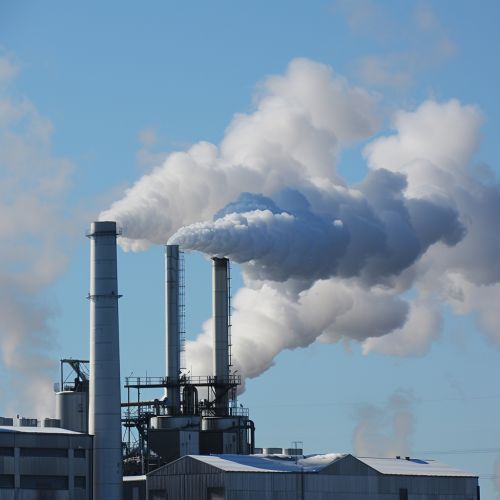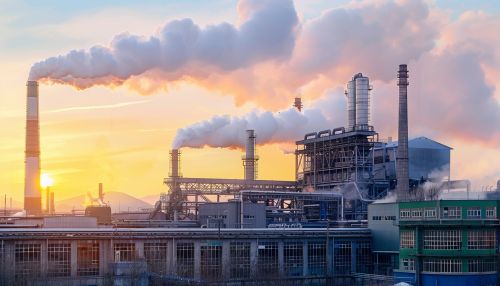Pollution Control
Introduction
Pollution control refers to the processes and activities that aim to reduce or eliminate the release of pollutants into the environment. These pollutants, which can be in the form of solid, liquid, or gaseous substances, can harm human health, damage the environment, and cause a general degradation of quality of life. Pollution control is a key aspect of environmental management and conservation efforts, and it involves a wide range of strategies, methods, and technologies.


Types of Pollution
There are several types of pollution that require control measures. These include air pollution, water pollution, soil pollution, noise pollution, and light pollution. Each type of pollution has unique characteristics and requires specific control strategies.
Air Pollution
Air pollution is the release of pollutants into the atmosphere that are harmful to human health and the planet as a whole. These pollutants can be in the form of particulate matter, gases, or biological molecules. Control measures for air pollution include the use of scrubbers and filters in industrial facilities, the promotion of clean energy sources, and the enforcement of emission standards.
Water Pollution
Water pollution involves the contamination of water bodies such as lakes, rivers, oceans, and groundwater. This form of pollution can occur through the direct discharge of industrial waste into water bodies, the runoff of pollutants from land, or the leaching of pollutants from landfill sites. Water pollution control measures include wastewater treatment, the implementation of proper waste disposal practices, and the use of environmentally friendly products.
Soil Pollution
Soil pollution refers to the contamination of soil with harmful substances. This can occur through the spillage of hazardous substances, the use of harmful pesticides and fertilizers, or the disposal of waste in landfills. Soil pollution control measures include the use of organic farming methods, the remediation of contaminated sites, and the implementation of waste management practices.
Noise Pollution
Noise pollution is characterized by harmful levels of noise caused by human activities such as transportation, construction, and industrial processes. Noise pollution can have detrimental effects on human health and wildlife. Control measures for noise pollution include the use of noise barriers, the regulation of noise levels in urban areas, and the design of quieter machinery and equipment.
Light Pollution
Light pollution involves excessive or misdirected artificial light. This type of pollution can disrupt ecosystems, waste energy, and cause adverse health effects. Light pollution control measures include the use of shielded lighting fixtures, the implementation of light curfews, and the promotion of dark sky preserves.
Pollution Control Strategies
There are several strategies for pollution control, which can be broadly categorized into three approaches: prevention, reduction, and remediation.
Prevention
Prevention strategies aim to stop pollution before it occurs. This can involve the use of clean technologies, the implementation of sustainable practices, and the enforcement of environmental regulations. For example, renewable energy sources such as wind and solar power can prevent the emission of greenhouse gases associated with fossil fuel use.
Reduction
Reduction strategies aim to decrease the amount of pollution that is produced. This can involve the use of more efficient processes, the recycling of waste, and the implementation of conservation measures. For example, energy-efficient appliances can reduce the amount of electricity consumed, thereby reducing the amount of pollution associated with electricity production.
Remediation
Remediation strategies aim to clean up pollution after it has occurred. This can involve the use of remediation technologies, the restoration of damaged ecosystems, and the treatment of polluted water or soil. For example, bioremediation uses microorganisms to break down pollutants in soil or water.
Pollution Control Technologies
There are numerous technologies available for pollution control. These technologies can be used to remove pollutants from emissions, treat polluted water or soil, or reduce noise or light pollution.
Air Pollution Control Technologies
Air pollution control technologies include scrubbers, filters, and electrostatic precipitators. Scrubbers remove pollutants from industrial emissions by passing them through a scrubbing solution. Filters trap particulate matter in a filter medium, while electrostatic precipitators use an electric charge to remove particles from emissions.
Water Pollution Control Technologies
Water pollution control technologies include physical, chemical, and biological treatment processes. Physical treatment processes remove pollutants by sedimentation, filtration, or flotation. Chemical treatment processes use chemicals to remove pollutants, while biological treatment processes use microorganisms to break down pollutants.
Soil Pollution Control Technologies
Soil pollution control technologies include soil washing, soil vapor extraction, and bioremediation. Soil washing uses water to remove pollutants from soil. Soil vapor extraction removes volatile pollutants by applying a vacuum to the soil. Bioremediation uses microorganisms to break down pollutants in soil.
Noise and Light Pollution Control Technologies
Noise pollution control technologies include noise barriers, mufflers, and soundproofing materials. Noise barriers block noise from reaching sensitive areas, mufflers reduce noise from machinery, and soundproofing materials absorb sound. Light pollution control technologies include shielded lighting fixtures, timers, and motion sensors.
Conclusion
Pollution control is a crucial aspect of environmental management and conservation. It involves a wide range of strategies, methods, and technologies aimed at reducing or eliminating the release of pollutants into the environment. By preventing, reducing, and remediating pollution, we can protect human health, preserve the environment, and improve the quality of life for all.
